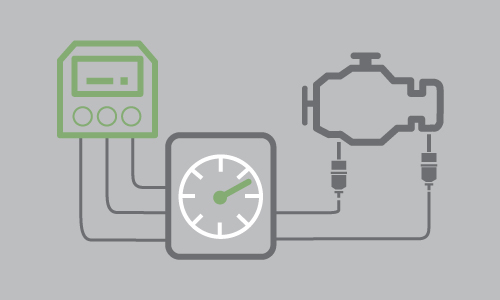Engine testing and certification is an important part of any R&D process. Naturally, this process exists to ensure reliability and that the engines themselves are compliant with EPA standards, but that means you’re holding and operating multiple HAP and VOC producing items in one place. Often existing in or near main population centers, stakes are high, and regulations are strict.
Today, we look at the role that engine test facilities play in the automotive industry, discuss some of the challenges that companies face in reducing emissions, and explore how to reduce air pollution at facilities.
The Importance of Engine Test Facilities
Engine testing is a vital process in the research, development, and manufacturing of any vehicle. With recent evolutions in the automotive world, the process of understanding how engines work in specific environments to ensure that promises are kept.
Whether this is in the form of third-party services designed to test engines or through engine test stands sold to and implemented at OEM facilities, these products are a necessity to provide accurate information about how products work.
From torque calculations to air-fuel optimization to pollutant concentration analysis and more, engine testing is designed to:
- determine fuel efficiency and drivability: torque-speed performance test under steady-state and transient conditions
- determine durability: ageing tests, oil and lubrication tests
- determine compliance to relevant emission legislations: volumetric and mass emission tests overstated emission test cycles
- gain further knowledge about the engine itself: engine mapping exercise or development of multidimensional input-output maps among different engine variables. e.g. a map from intake manifold pressure and engine speed to intake air flow rate.
Engine Test Facilities Impact on Health and the Environment
Unfortunately, engine testing is basically the equivalent of “running an engine in place.” Though part of this process may reduce the long-term impact of your engines on the environment, testing relies on combustion, combustion creates Volatile Organic Compounds (VOCs) and Hazardous Air Pollutants (HAPs), and VOCs and HAPs need to be controlled.
Not only does exposure to these chemicals have potential to harm your employees, improper destruction and abatement can harm the environment or worse, expose you to legal and regulatory challenges.
According to the guiding regulations, emission data collected during development of standards show that several HAPs are emitted from engine test cells/stands. These HAP emissions are formed during combustion or result from HAP compounds contained in the fuel burned. Numerous HAP are emitted from combustion in engine test cells/ stands; examples include toluene, benzene, mixed xylenes, and 1,3- butadiene.
Common HAPs at Engine Test Facilities and Their Health Impacts
Many of these have direct negative effects. Among the hazards:
- Toluene causes a wide range of negative health affects; dysfunction of the central nervous system (CNS), narcosis, mild fatigue, weakness, confusion, lacrimation, and paresthesia. Acute exposure may cause irritation of the eyes, respiratory tract, and skin. Too much results in death.
- Benzene is a known human carcinogen whose health effects include nerve inflammation, CNS depression, and cardiac sensitization.
- Exposure to mixed xylenes in humans results in irritation of the nose and throat, gastrointestinal effects such as nausea, vomiting, and gastric irritation, mild transient eye irritation, and neurological effects.
- Exposure to 1,3-butadiene by inhalation in humans results in irritation of the eyes, nasal passages, throat, and lungs, and causes neurological effects such as blurred vision, fatigue, headache, and vertigo.
Really, not the kind of things you want to expose employees to.
Environmental Impacts of Engine Test Facilities
Similarly, engine test facilities generate organics and HAPs that, when released into the environment, cause negative effects on the population at large. Similarly to the human impacts, HAP and VOC generation can cause the community surrounding your facilities to experience these health hazards. In addition, certain pollutants could result in more ground-level ozone, NOx, and more.
Destroying Pollutants at Engine Test Facilities
Though there are many ways to address the challenges, proper airflow and pollutant destruction can help to protect employees, the environment, and your compliance initiatives.
The CMM Group has worked with dozens of companies in the automotive industry to create air pollution abatement products that can reduce emissions, bring you within compliance requirements, and position your facility for success. When deciding what system to use, consider the utility costs, facility layout, regulatory requirements, and current VOC emission levels.
We can design, manufacture, and install a custom pollution control solution for your business, as well as working to improve your facility design for increased pollution control efficiency. Learn more about how we help and contact us for more information.




